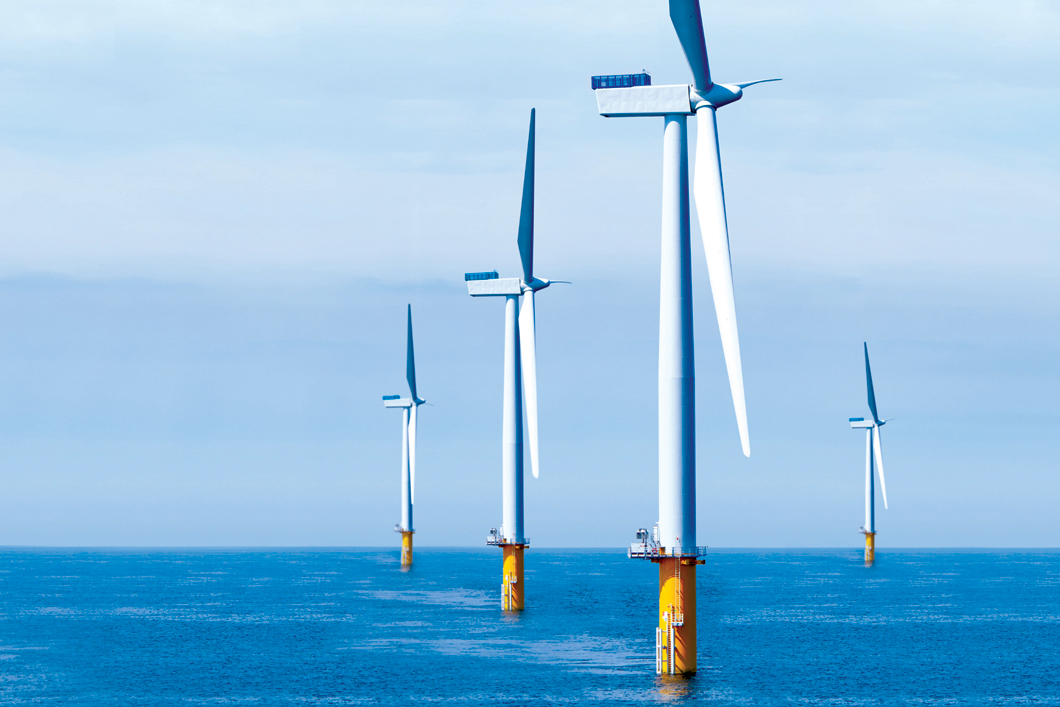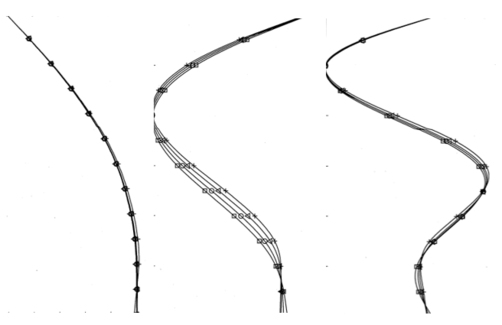
Offshore wind turbines are subjected to severe loads from wind, waves and saline water.
Source: BAM
Wind-energy towers are often built on pile foundations. The tower-pile-soil system is permanently excited by wind and wave loads. The dynamic behavior can be calculated by a combined finite-element boundary-element method where the tower and the piles are calculated by the finite-element method and the continuous soil by the boundary-element method. The dynamic stiffness matrix of the soil is built from the Green’s functions of the homogeneous or layered soil. Different flexible piles in different soils have been analysed in frequency domain. The bending stiffness of the pile and the stiffness of the soil have been analysed for their influence on the compliance and damping of the foundation. The results can be determined as specific power laws for the different soil models (Winkler support, homogeneous continuous soil, continuous soil with root-parabolic and proportional-linear stiffness variation).

Pile foundations for wind turbines: The first three modes of natural vibration of the tower-pile-ground system
Source: BAM, Division Buildings and Structures
The strongest influence of the soil can be found for the homogeneous soil and the horizontal load case. A soil with increasing stiffness over depth has a weaker influence. The bending stiffness has the weakest influence on the horizontal compliance component. The results are compared with the simple model of a Winkler support. Winkler soils have always a weaker influence than the corresponding continuous soils. In addition to the frequency-dependent compliances, the displacement and force distributions along the pile have been analysed. They are concentrated near the soil surface, the forces stronger than the displacements. Forces and displacements do not follow the Winkler hypothesis. A wind energy tower has been calculated and the damping effects of different soils has been demonstrated. The compliance and damping of the pile foundation are important for the resonant frequency and the resonant amplitude and should be calculated appropriately.
Compliance and damping of piles for wind tower foundation in non-homogeneous soils by the finite-element boundary-element method
Lutz Auersch
published in Soil Dynamics and Earthquake Engineering 2019, Vol 120, Issue 5, Pages 228-244
BAM, Division Buildings and Structures


